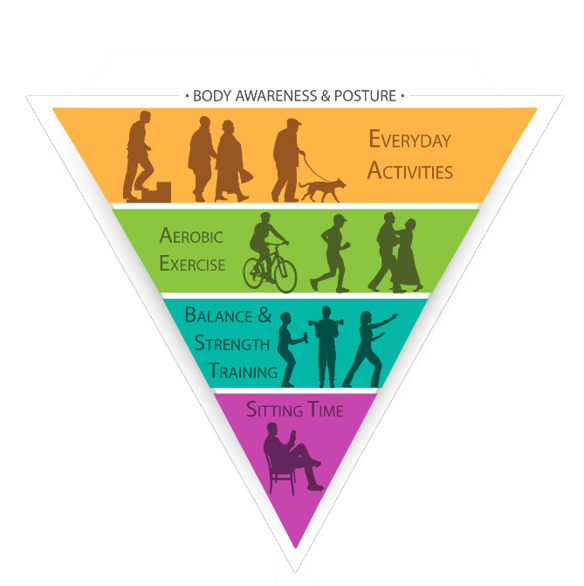By Mia Langford, Megan M. McAllister, Rosanne Barnes, Maureen C. Ashe
April 27, 2015
In a recent publication, Canadians were reported to have very low rates of awareness of physical activity guidelines, particularly among older Canadians. Although there are established recommendations for adults to engage in regular physical activity for health benefits, only 37% of Canadians and 36% of Americans are even aware that these guidelines exist. This lack of awareness of recommended physical activity, including strength and balance training, can leave us falling short of our weekly requirements. Knowledge is power—and in this case, muscle power (and strength)!
MEETING GUIDELINES?
There are a number of studies (2 of which can be found here and here) that highlight that over 70% of older adults do not meet physical activity guidelines. However, these studies frequently focus on the cardiovascular, or aerobic, component of the recommendations. There are only a handful of studies published on whether adults or older adults meet the strength training recommendations, and even less focus on balance training. Based on findings so far, it is relatively uncommon for adults and older adults to meet these strength guidelines, and, importantly, the number of people who meet strength guidelines declines with age (more information here and here).
This leaves a large proportion of adults and older adults falling short of their weekly activity dose. In particular, only 24% of adults over the age of 45 years are meeting strength training guidelines, and for adults 65 years+ this drops to 22%. Yet, strength and balance exercises are key to reduce the risk of falls (read here) (and related injuries) and promote independent living. Thus, although older adults may have the most to gain from muscle strengthening exercises, they seem to be doing the least amount.

WHY SHOULD STRENGTH TRAINING MATTER TO YOU?
Strength training is critical for maintaining health and physical function. As we age, our muscle strength can decrease starting at midlife. The loss of muscle strength and power can result in functional limitations (e.g., difficulty walking, going up stairs or bending to reach objects) resulting in challenges to independence. However, loss of muscle strength (from inactivity) is reversible, no matter which age you start (more on this here and here)!
Strength training works by improving muscle mass and physical function, but the benefits do not stop there. By improving your muscle strength and function you could improve or maintain your bone health, cognition, and blood pressure, to name a few of the many health benefits. Strength, or resistance training, can also improve your quality of life by providing increased mobility and functional independence.
A NEW PERSPECTIVE
We know that physical activity has beneficial health effects. However, there are often many challenges for some adults and older adults to “exercise”. These barriers frequently include associated costs, scheduling constraints and family responsibilities. Lately, there has been a shift in thinking to encourage adults and older adults to move more within their daily routines.
However, as important as breaking up sitting time is though incidental activity, we also need to add in more strength and balance training. Recently, Clemson and colleagues’ developed and tested the Lifestyle integrated Functional Exercise (LiFE) program, that encourages adding in more strength and balance exercises into daily routines, such as shifting weight from one foot to the other, walking up stairs and squatting to open drawers instead of bending at the hip. Recognizing the importance of being active, we suggest that there are three behaviours that need to be considered for a healthy lifestyle: sitting less, increasing daily activity and engaging in strength and balance exercises.
That is, in simple terms: Sit less, Move More and Be Strong!
